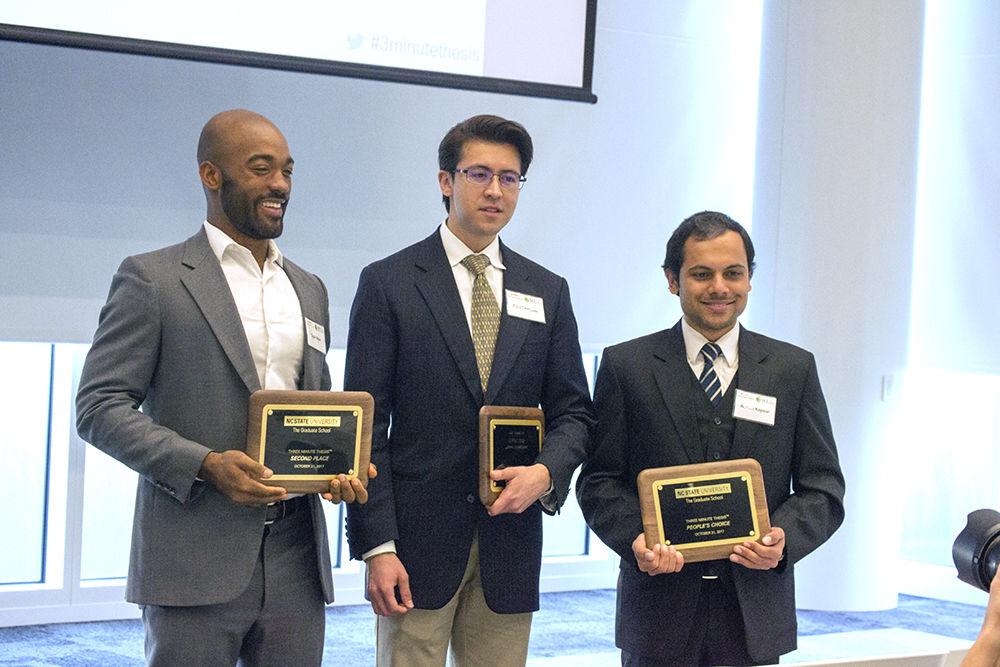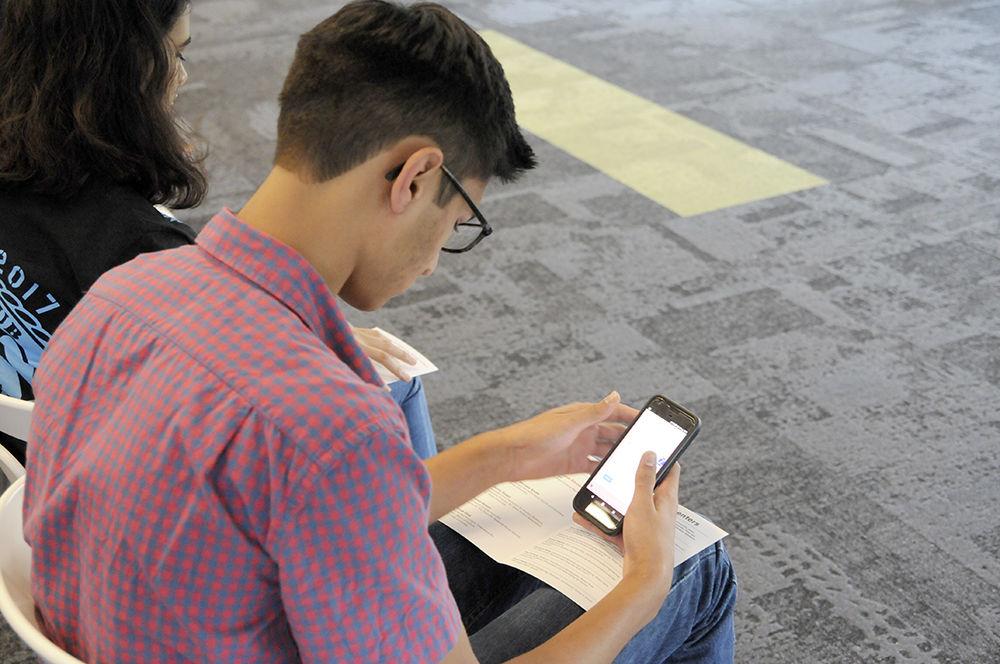The final round for the third annual Three-Minute Thesis Competition for graduate students was Tuesday evening in the Duke Energy Hall on Centennial Campus.
Ten students from the Ph.D. and master’s programs from five different colleges at NC State presented their theses, findings and their significance within a period of three minutes.
Paul Enriquez, a Ph.D. student studying molecular and structural biochemistry, won first place in the competition and second place went to Tyler Allen, a Ph.D. student studying molecular biomedical sciences.
Allen’s presentation, “The Cancer Exodus Hypothesis,” dealt with the movement of tumor and cancer cells through the blood stream and the difference in the properties of groups of cells as compared to the individual cells.
“My current research focuses on understanding how cancer spreads to different parts of the body and how cells enter and exit different blood vessels in the body,” Allen said. “I find and analyze tumor cells which spread to different parts of the body. This helps understand their behavior in groups.”
Allen uses genetically modified zebrafish blood vessels in his study. By injecting tumor cells into the fish their behavior can be analyzed in a living organism, which can be studied for human beings. Allen has collaborated with laboratories at Duke University and UNC-Chapel Hill to further his research.
“The future is to better understand this process so that we can reduce the number of people who die because of cancer,” Allen said.
Ashish Kapoor, a Ph.D. student studying textile engineering, chemistry and science, won the “People’s Choice” award at the event by popular audience vote for his presentation on “Fiber-based Fabric Sensors.”
“I work at the polymer level to make the fibers sensory and electrically functional,” Kapoor said. “Once we accomplish this we can weave them and use their electrical properties like piezo resistivity and capacitance for different applications. The major advantage of this combination of fibers is that each fiber can act as resistive as well as capacitive. Every cross over point acts as a sensory capacitive pixel.”
Kapoor aims to produce functional sensory fibers and make large sensory arrays.
“One of current applications of this is for amputees,” Kapoor said. “Sensors can be used in their socks which will help to design more comfortable liners for them.”
The four judges decided the fate of the participants based on the content of research, the style of presentation and the practical applicability of the results of the research.
Peter Harries, the interim dean of the graduate school, also attended the event.
“We at NC State wish to produce students who can do cutting edge research and portray it in a fashion which is understandable to the common populace,” Harries said. “The society has started distrusting science which is not good for our growth. Innovations are the backbone of development of our country. Our major goal is to give students a venue where they can present their thesis as well as motivating the younger students to pursue research. Irrespective of where you are, proper translation of your efforts is essential for your success.”
Students from Enloe High School in Raleigh also attended the event to gain exposure and insight into the latest happenings in research.
Rishi Parikh, a junior at Enloe High School, votes for which researcher he thought did the best job explaining their thesis on his phone at the Three-Minute Thesis Competition in the Duke Energy Center of Hunt Library on Tuesday. Parikh attended the event as extra credit for his AP research class.









